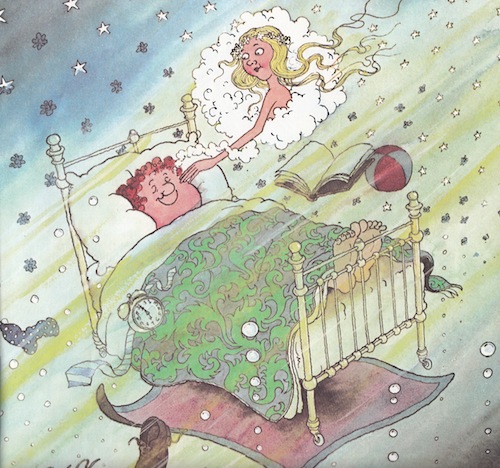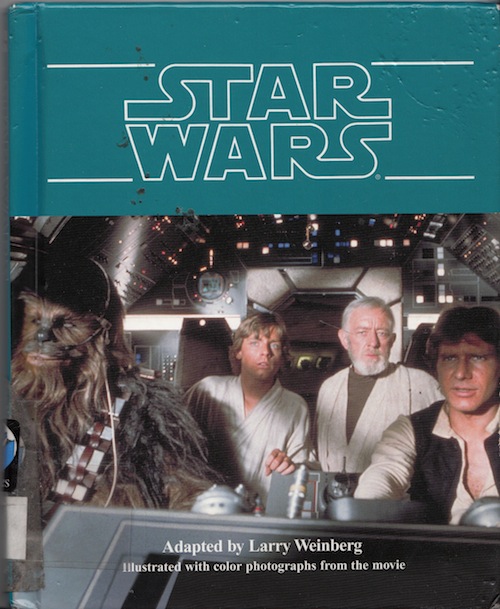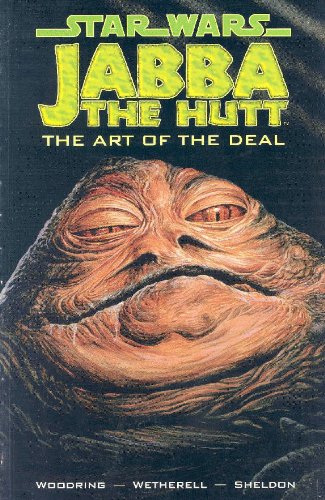A few weeks ago I wrote a piece for the New York Times “At Home” section about a craft project called a “Flibber,” which you make from a few sheets of newspaper. The craft was suggested by a Times reader who fondly remembered learning how to make it from an old children’s book called How to Make Flibbers, etc. by Robert Lopshire. You can read the story here.
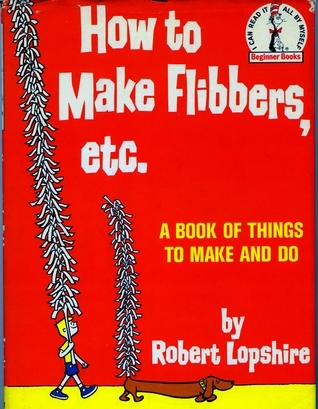
This is the same Robert Lopshire who wrote and illustrated the 1960 Beginner Books classic Put Me in the Zoo, about a magical polka dotted creature who, for some reason, wants to live in a zoo.
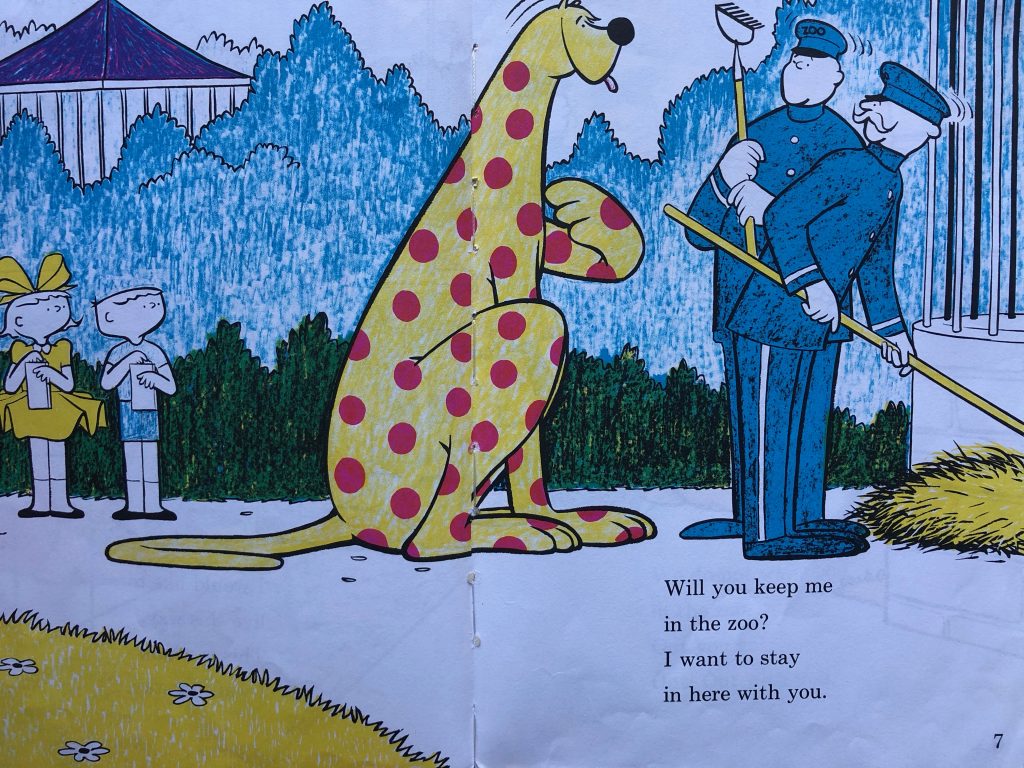
Put Me in the Zoo is a little problematic to read today, mostly because it makes no sense that this talking creature would be actively lobbying zookeepers to let him live in a cage. By the end of the book, the two kids he meets convince him that the CIRCUS is actually the place for him because he’s so good at impressing crowds with his tricks. (We’ll leave out what we now know about Barnum & Bailey.) But these points aside, it’s a charming rhyming book very much in line with other Beginner Books by P.D. Eastman and Dr. Seuss.
Then I realized that Robert Lopshire, who died in 2002, had illustrated a book that I totally loved as a kid: Big Max by Kin Platt (1965), part of the Harper & Row “I Can Read Mystery” series. Big Max was the first mystery I had ever encountered, and I was fascinated by the illustrations: the royal robes of the King of Pooka Pooka; Big Max’s bushy mustache; the palace rooms overflowing with rubies, emeralds and gold; the giant pink cake at the very end.
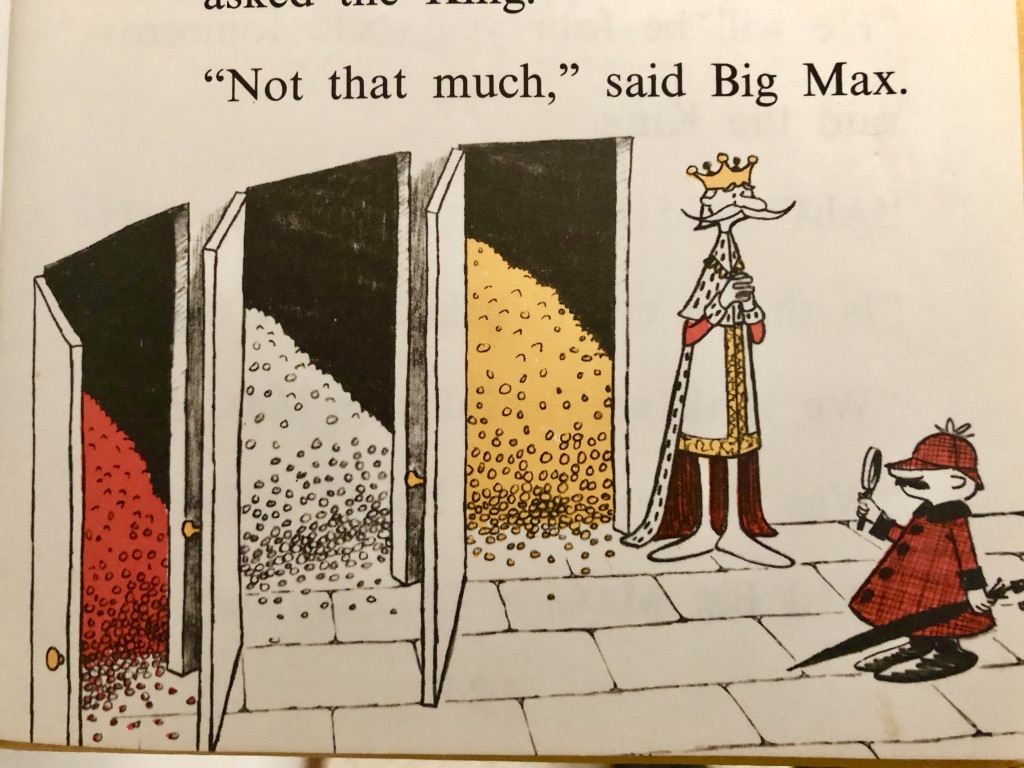
I was also rapt by the image of Big Max at home; the man lived in a disturbingly grim room with cracked walls and an old crate for furniture. Of course, now I see that Lopshire was having some fun portraying a down-in-the-dumps NYC (note the Empire State Building in the window).
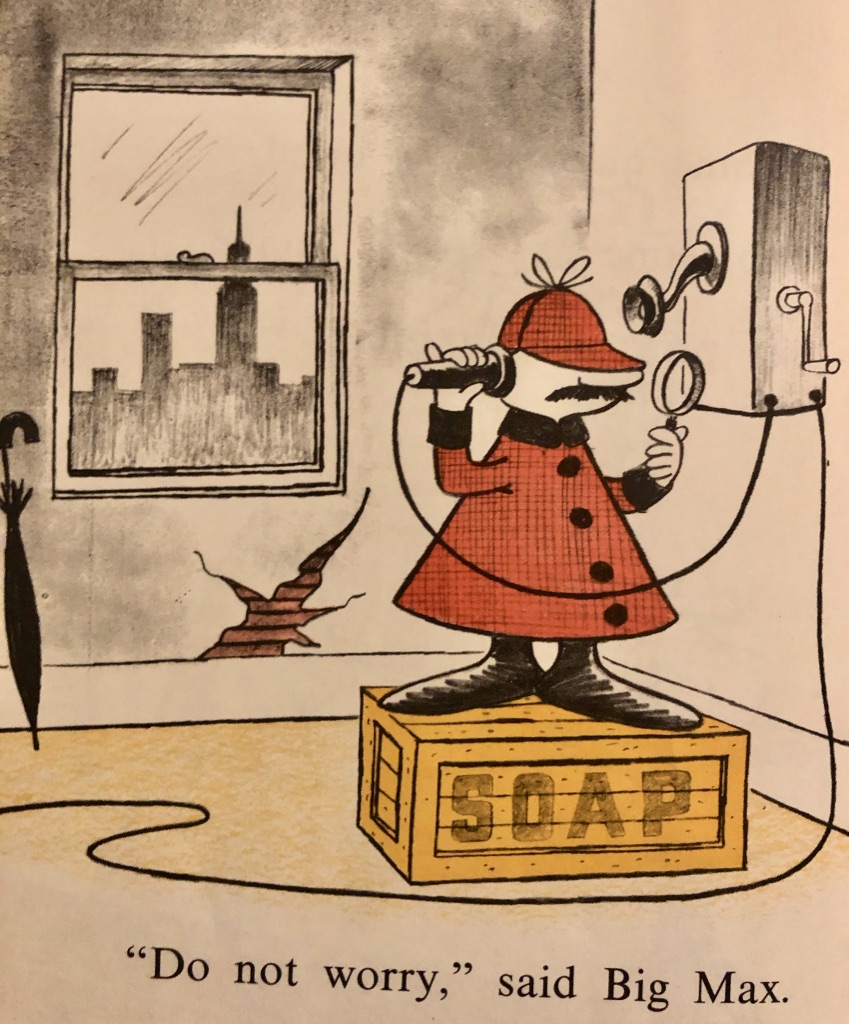
I wanted to learn more about Lopshire, but I found surprisingly little about him, not even in my ol’ reliable reference, Children’s Books and their Creators (ed. Anita Silvey). I did find a nice post in Vintage Kids’ Books My Kid Loves and also the below obituary, which revealed that Lopshire was a creative art director for Beginner Books when it first launched. And that he was a Navy Coast Guard veteran of WW2.
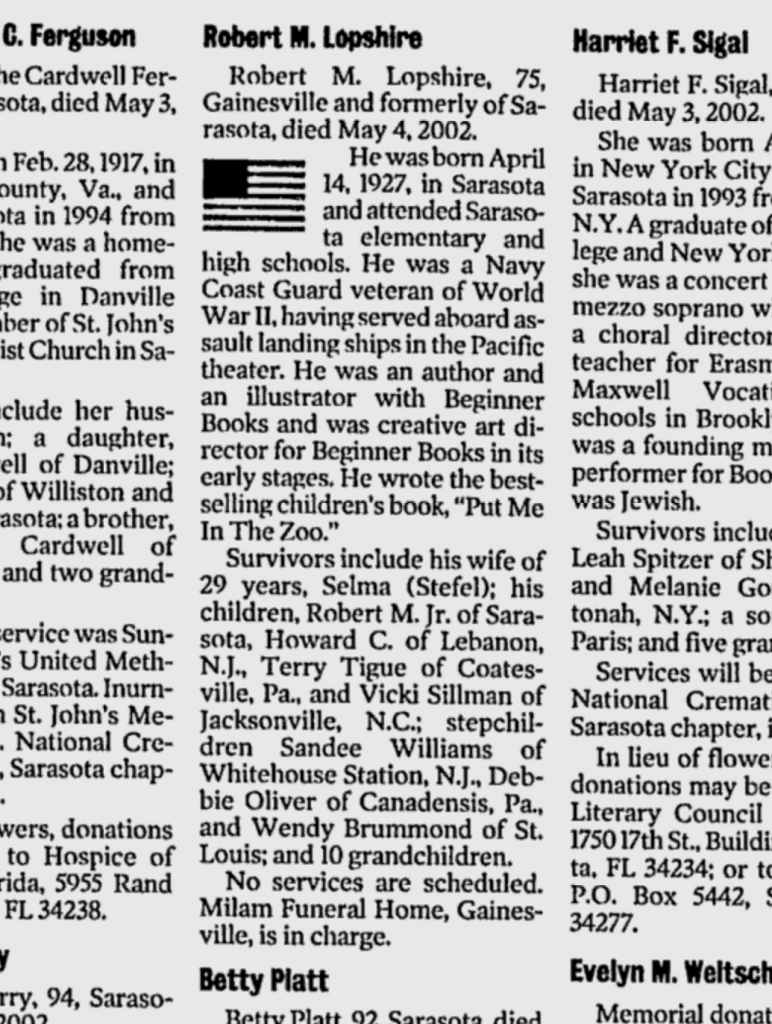
Though most of his books are long out of print, I was able to find copies of a few through my library. His Flibber book must have been a hit because he also published a followup, How to Make Snop Snappers and Other Fine Things. Both these books are fantastic. Every project requires only simple household materials, and the illustrated instructions are conveyed in the simplest and most kid-friendly way.
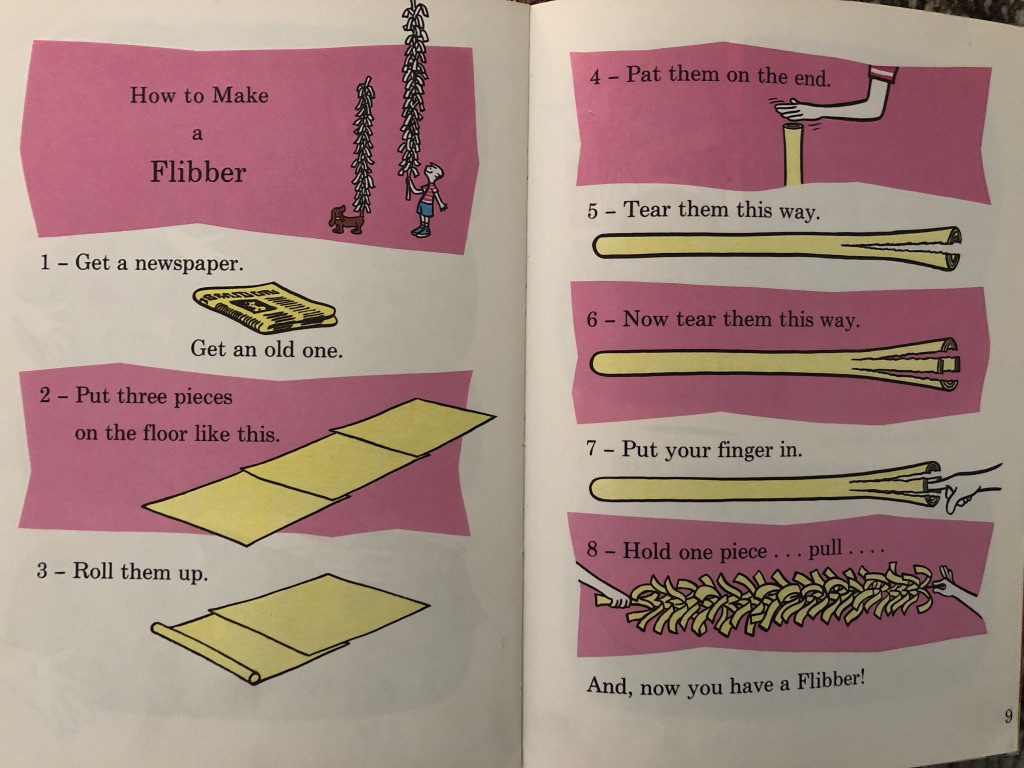
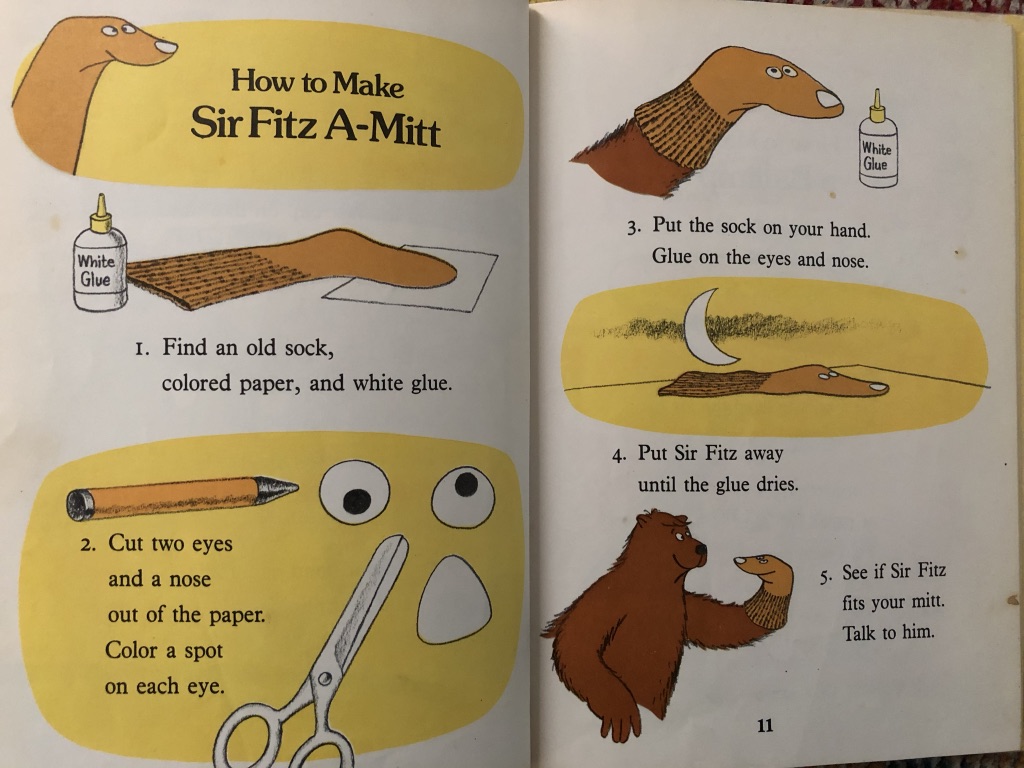
And the delightful names he gives his projects! You can make a Clompy Clown, a Link Link Chain, a Two-horned Noser, and even a Creepy Willy. (That last one sounds alarming but is basically a bent strip of paper that “creeps” when you blow it across the floor.)
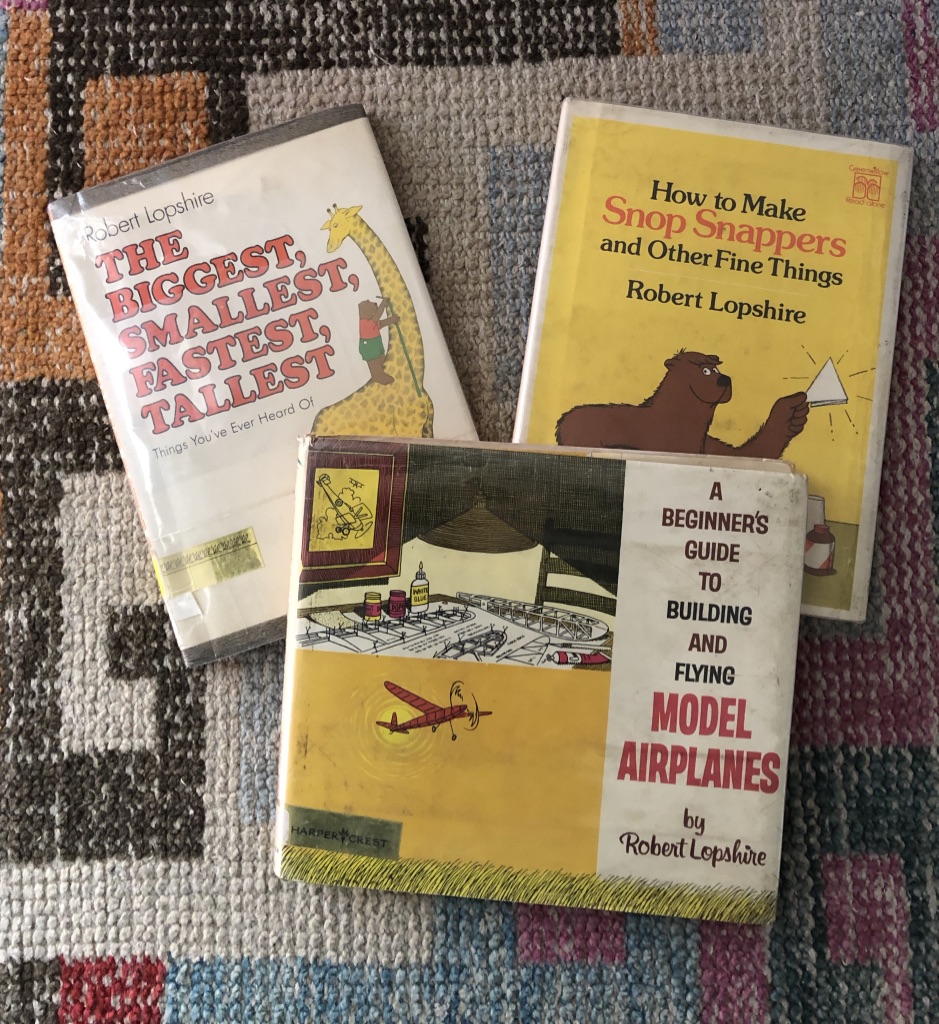
Still, I would daresay that Lopshire’s magnum opus is his A Beginner’s Guide to Building and Flying Model Airplanes (1967). Ostensibly for children, it’s an exhaustive and authoritative 128-page book that guides you through everything from soldering metals to the ins and outs of different woods to troubleshooting battery-powered engines. This book was obviously written with a true passion for model planes and also for sharing knowledge.
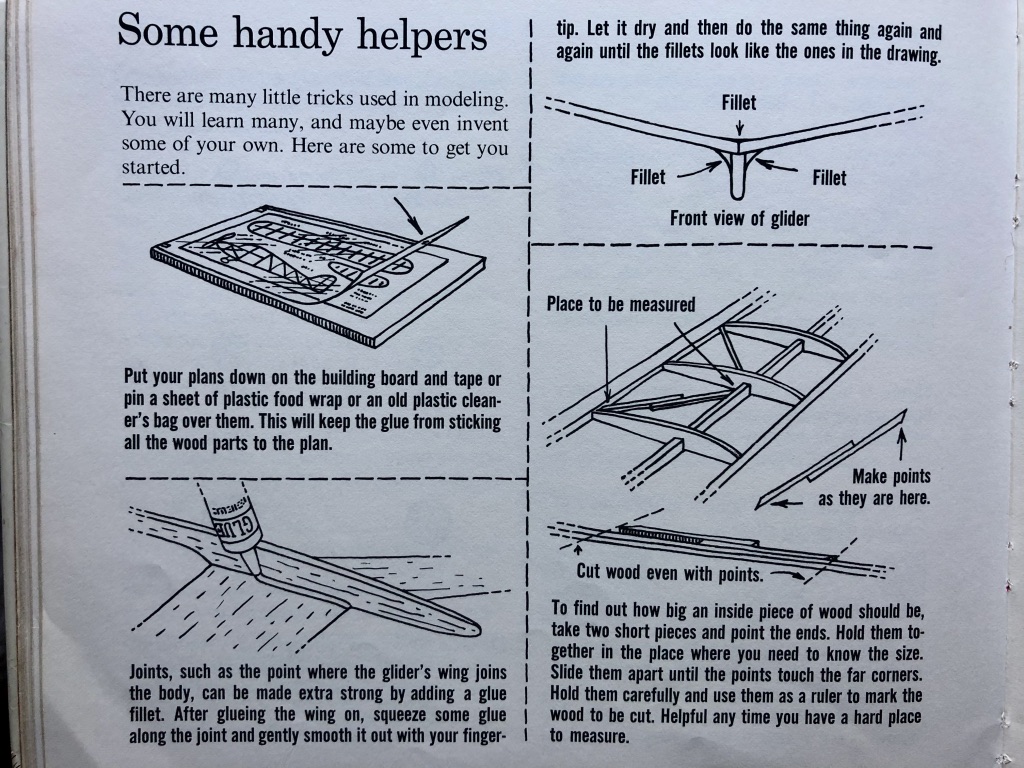
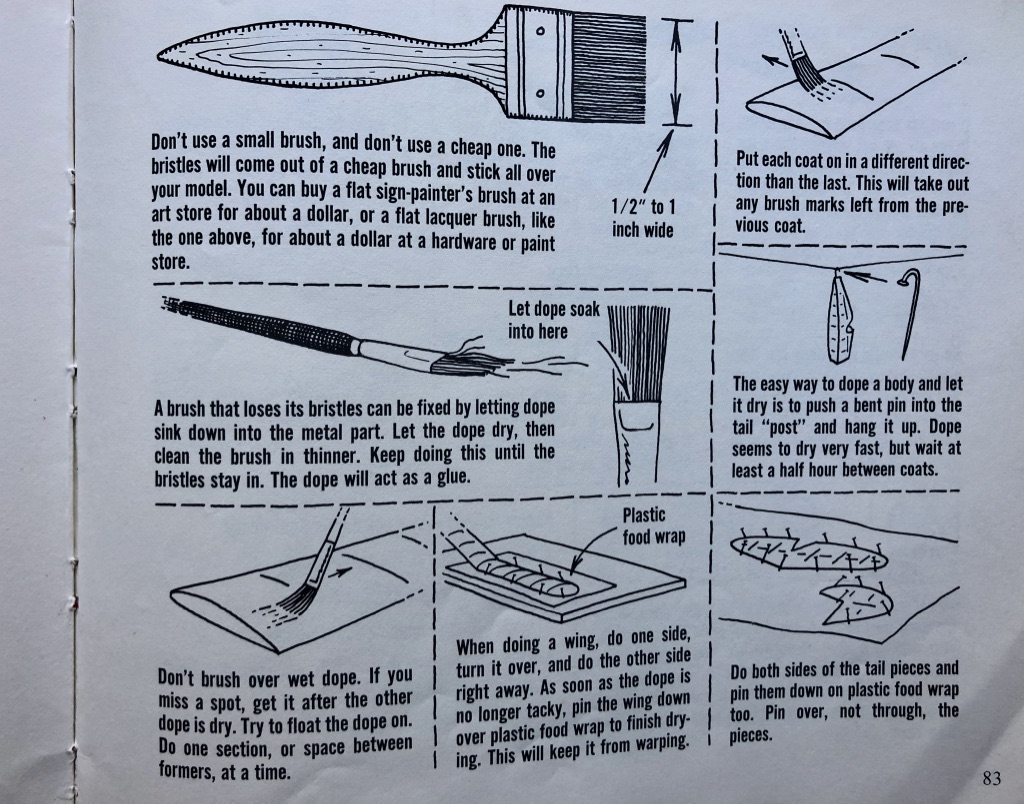
I also stumbled onto a cool little piece of the Lopshire puzzle. In this 1974 New York Times story about a world championship for model airplane enthusiasts (“World’s Top‐Flight Modelists Vie at Lakehurst”) he’s identified as “a children’s writer who is the spokesman for the Academy of Model Aeronautics.”
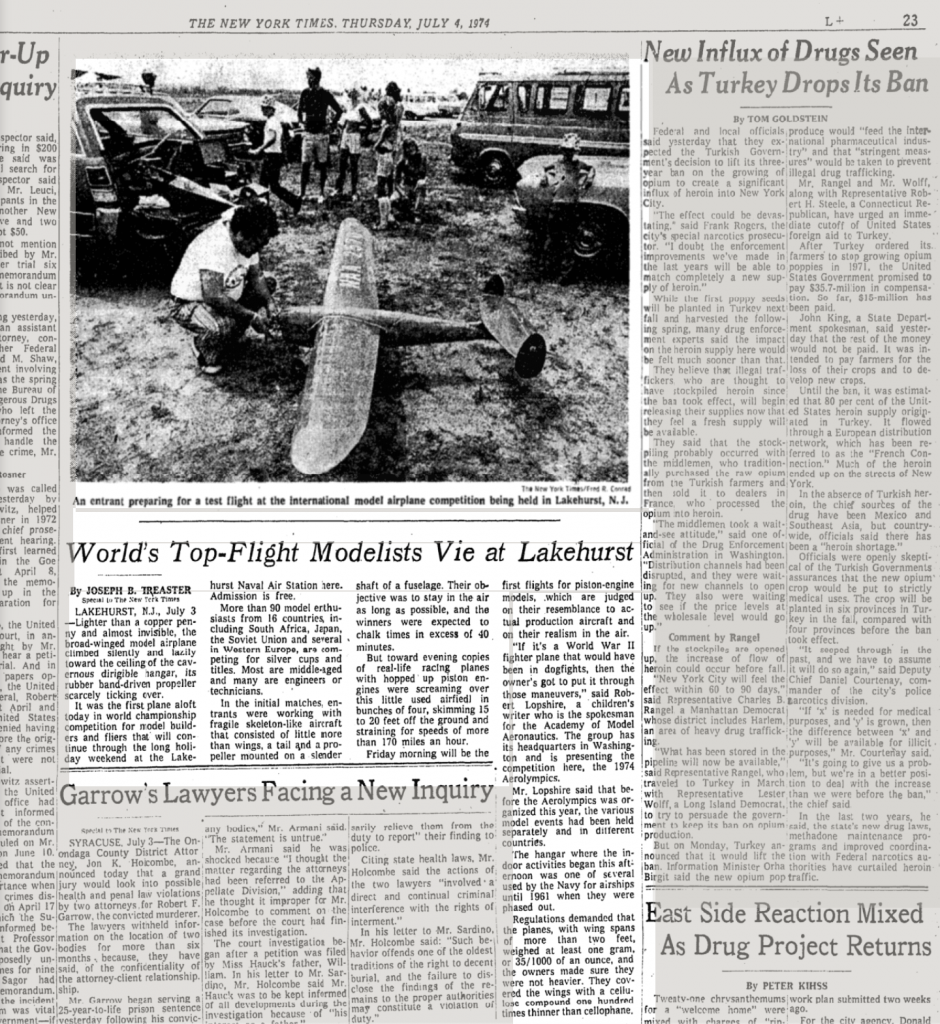
Used copies of Lopshire’s model airplanes book start at about $100 on Amazon. I loved reading the comments from readers (who seem to be primarily older men, as you’d expect) who remember this book with so much affection.
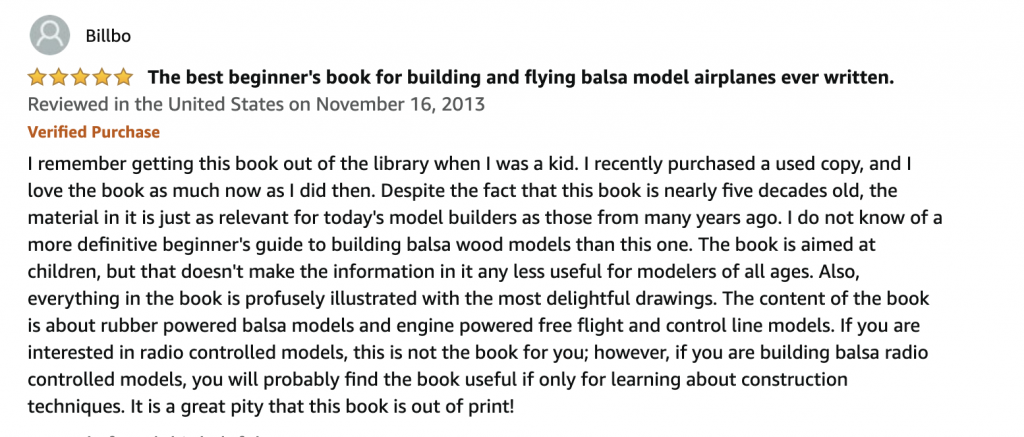
I keep thinking that Lopshire must have been an amazing dad who not only had appreciation for funny picture books but relished breaking out the tool kit and making things with his kids.
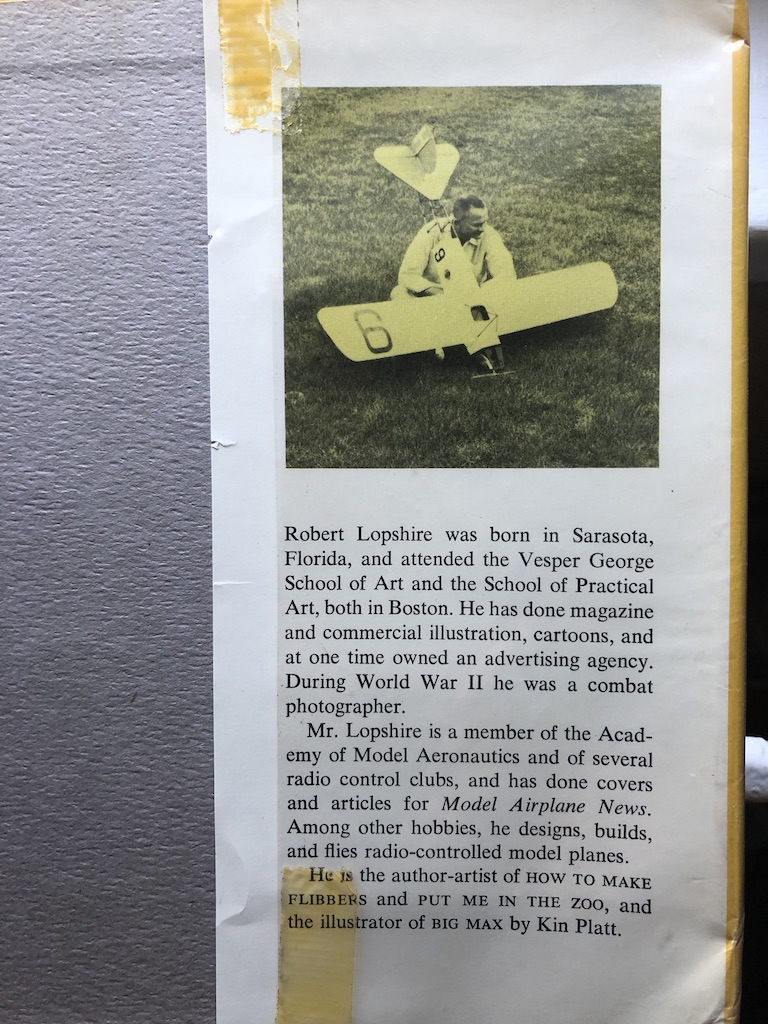




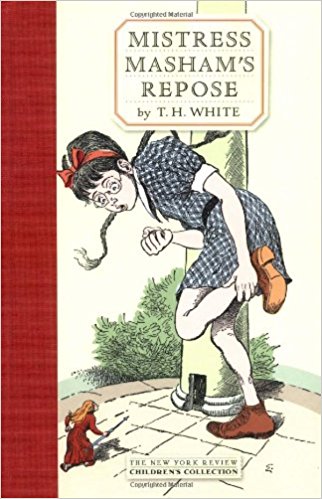
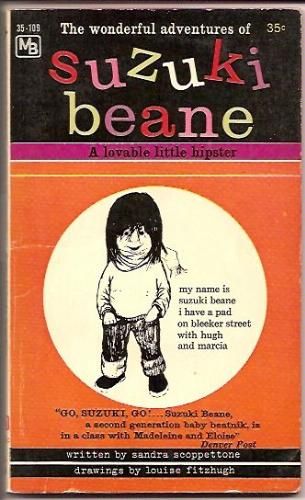 If you are a fan of Louise Fitzhugh and Kay Thompson —and you have an extra hundred bucks lying around— you can find rare copies of this 1961 book, The Wonderful Adventures of Suzuki Beane by Sandra Scoppettone. A beatnik take on Eloise, it tells the story of a naughty little hipster who lives on Bleecker Street with Hugh, her Beat poet father, and Marcia, her spaced-out sculptor mother. The distinctively grotesque and scratchy looking illustrations (by Louise Fitzhugh) look straight out of Harriet the Spy.
If you are a fan of Louise Fitzhugh and Kay Thompson —and you have an extra hundred bucks lying around— you can find rare copies of this 1961 book, The Wonderful Adventures of Suzuki Beane by Sandra Scoppettone. A beatnik take on Eloise, it tells the story of a naughty little hipster who lives on Bleecker Street with Hugh, her Beat poet father, and Marcia, her spaced-out sculptor mother. The distinctively grotesque and scratchy looking illustrations (by Louise Fitzhugh) look straight out of Harriet the Spy.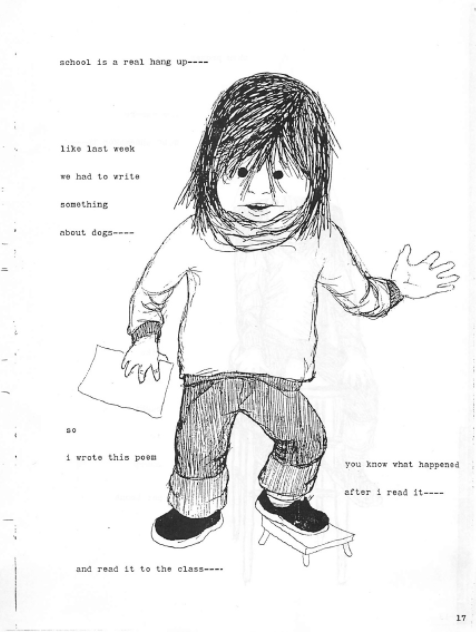 I was hoping I could find a copy of it through the library, but no luck. Fortunately, you can read the whole thing
I was hoping I could find a copy of it through the library, but no luck. Fortunately, you can read the whole thing 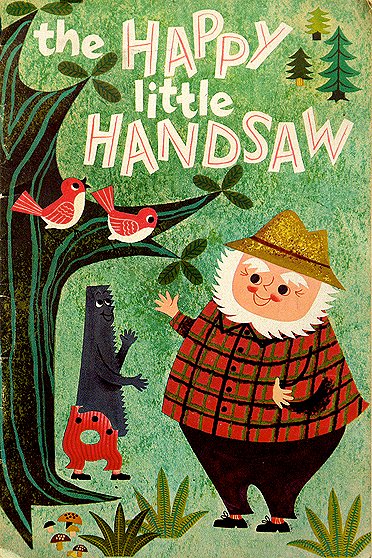 I think I need this book. Written
I think I need this book. Written 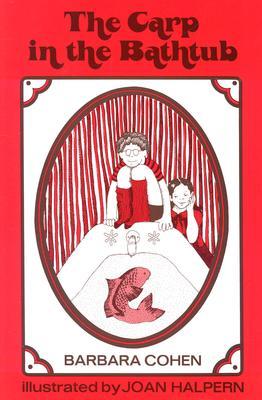 I’m Korean, but I grew up in Great Neck and I was obsessed with the
I’m Korean, but I grew up in Great Neck and I was obsessed with the 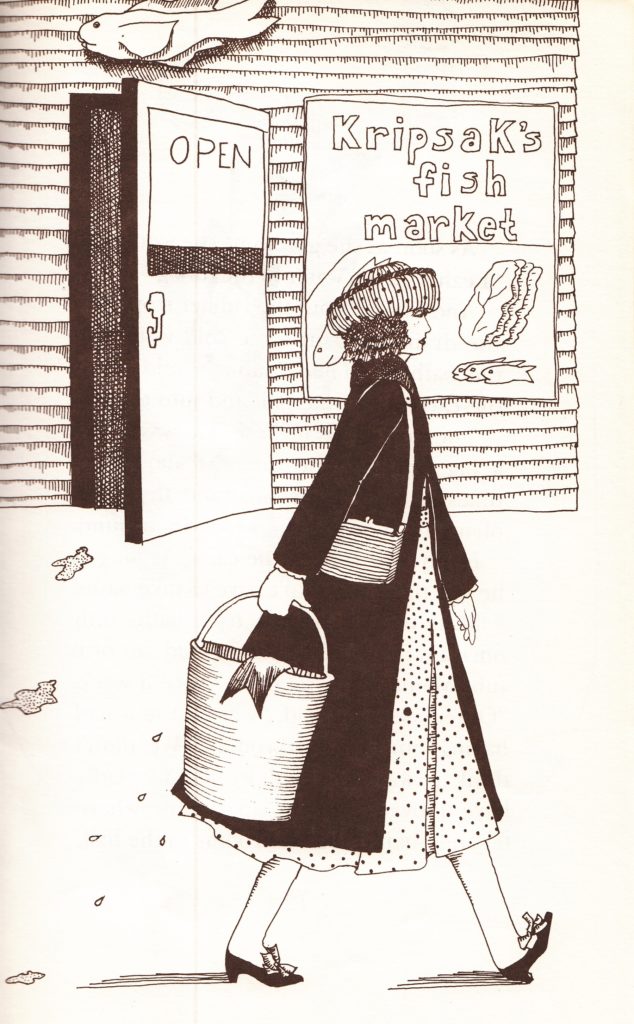 The family’s tub carp is a beloved annual ritual. The kids don’t have to bathe for a whole week and it’s the closest they ever get to having a pet.
The family’s tub carp is a beloved annual ritual. The kids don’t have to bathe for a whole week and it’s the closest they ever get to having a pet.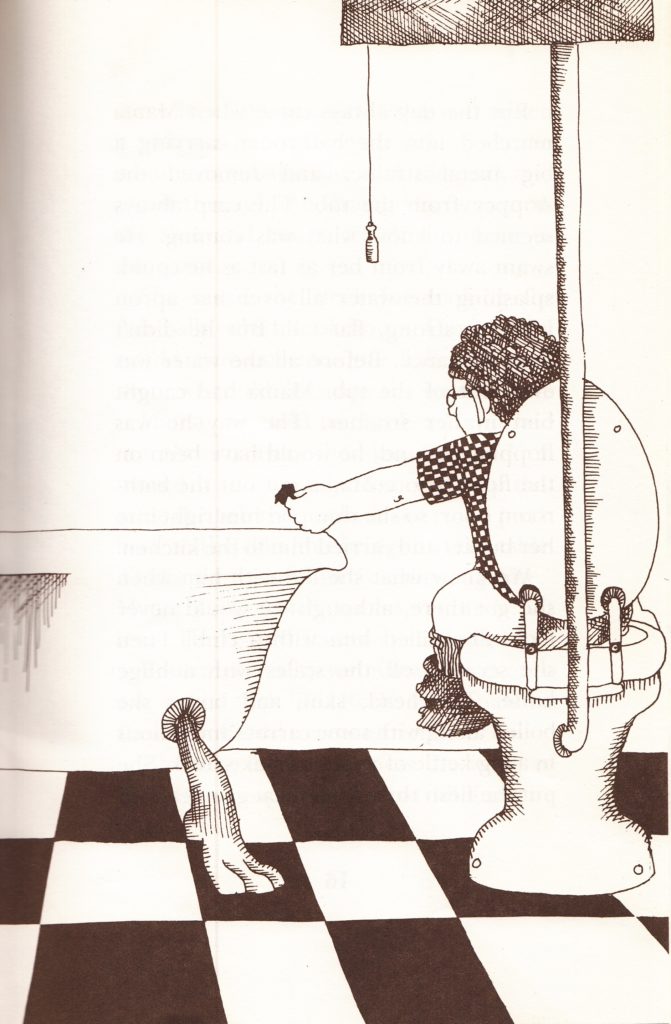
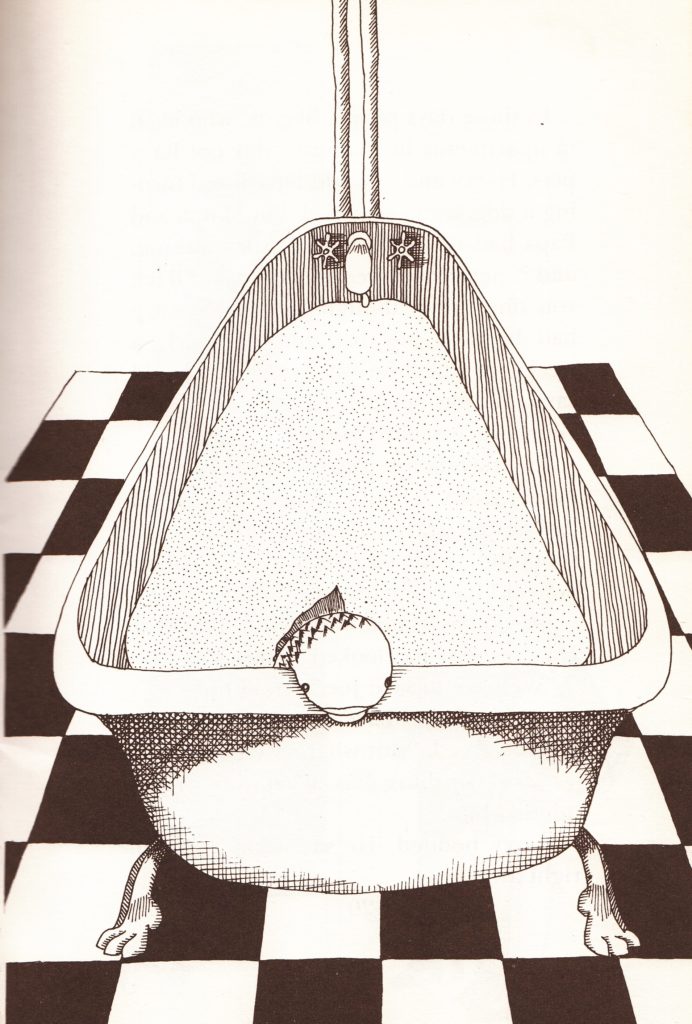
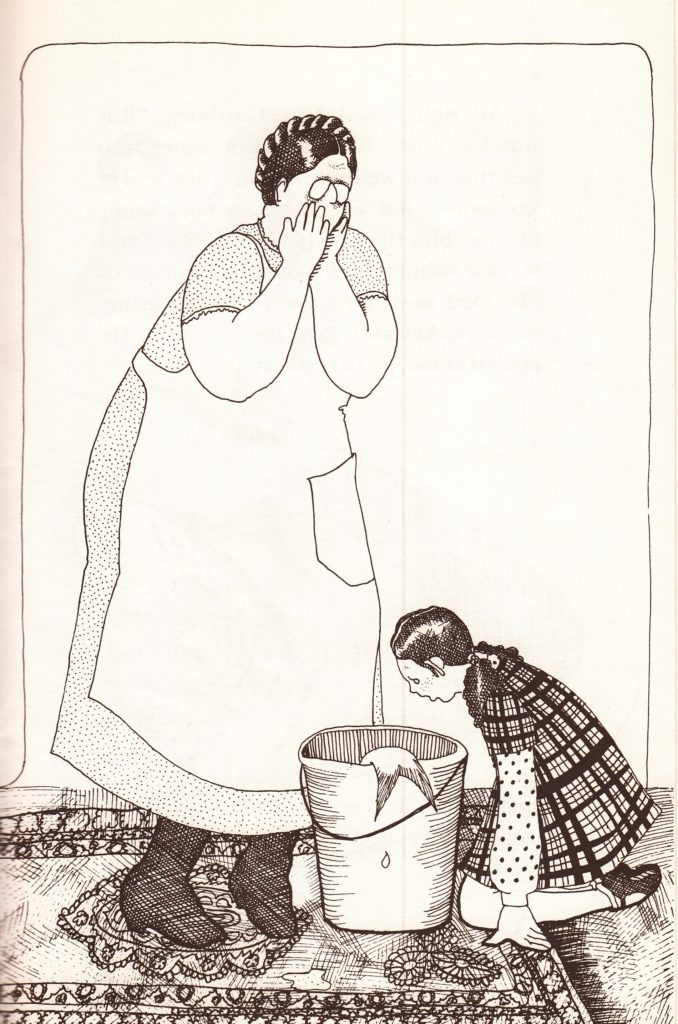
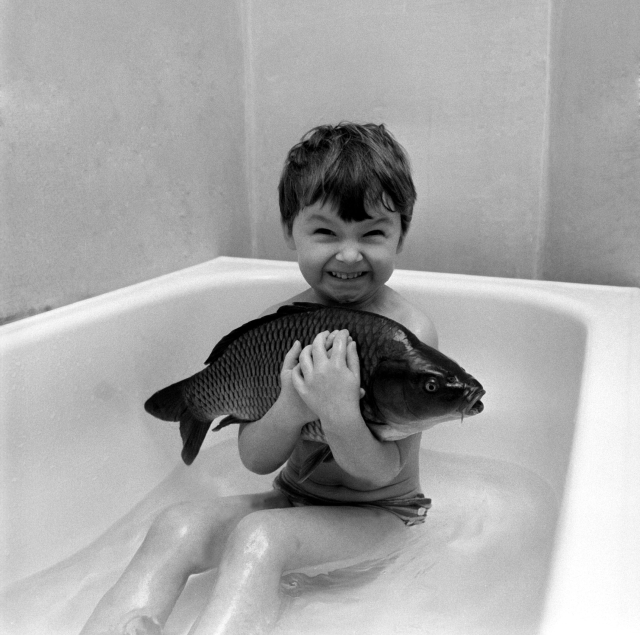
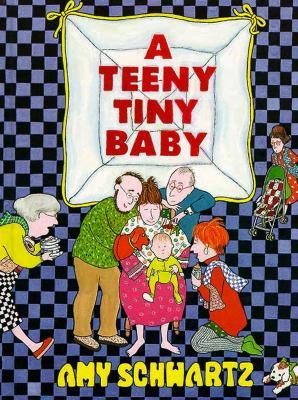
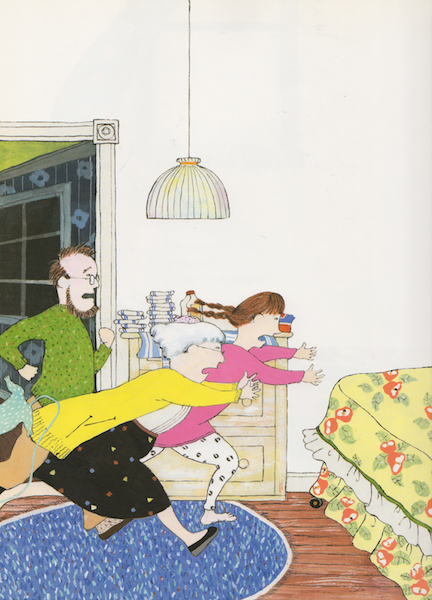 The story is told from the perspective of an infant in Brooklyn in his first few weeks of life. He reports his experiences at the center of the household —everybody cooing and fussing over him — in the most matter-of-fact way.
The story is told from the perspective of an infant in Brooklyn in his first few weeks of life. He reports his experiences at the center of the household —everybody cooing and fussing over him — in the most matter-of-fact way.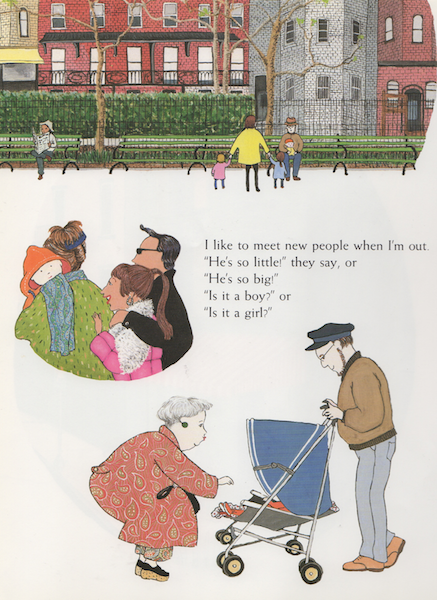
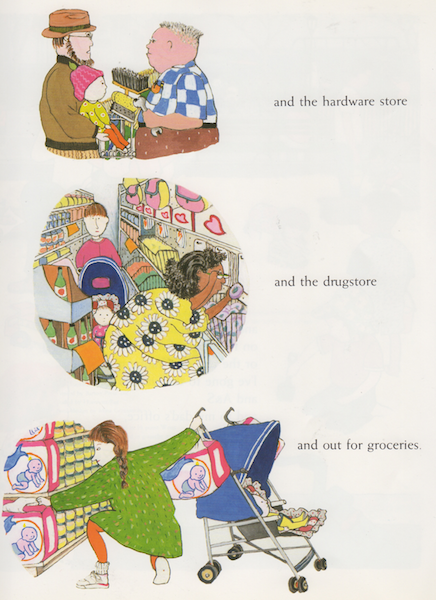
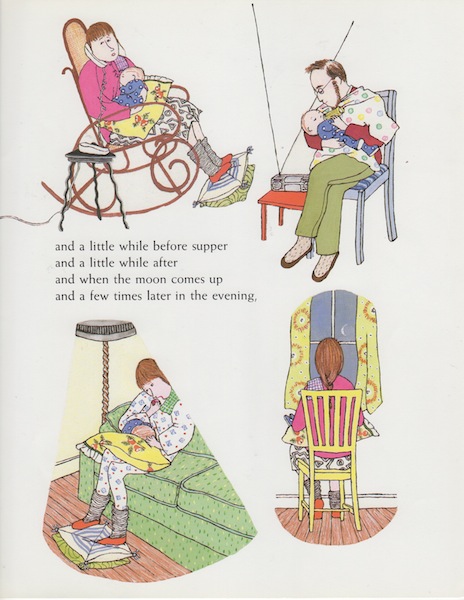 After the Teeny Tiny Baby hardcovers disappeared from Amazon, I noticed you could still find board book versions of the book. So I bought a few and gave those as gifts. But these days I can only find secondhand copies of this incredible book for sale. Heartbreaking!
After the Teeny Tiny Baby hardcovers disappeared from Amazon, I noticed you could still find board book versions of the book. So I bought a few and gave those as gifts. But these days I can only find secondhand copies of this incredible book for sale. Heartbreaking!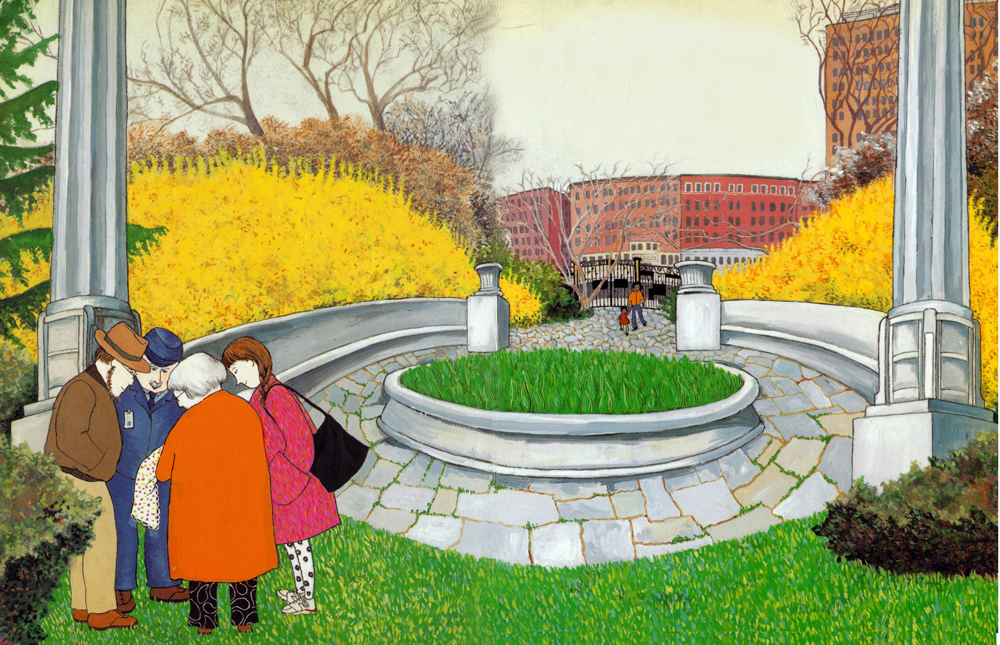 I might have to buy some used copies as gifts. I know this might gross out some new moms so maybe I’ll also include a bottle of Purell.
I might have to buy some used copies as gifts. I know this might gross out some new moms so maybe I’ll also include a bottle of Purell.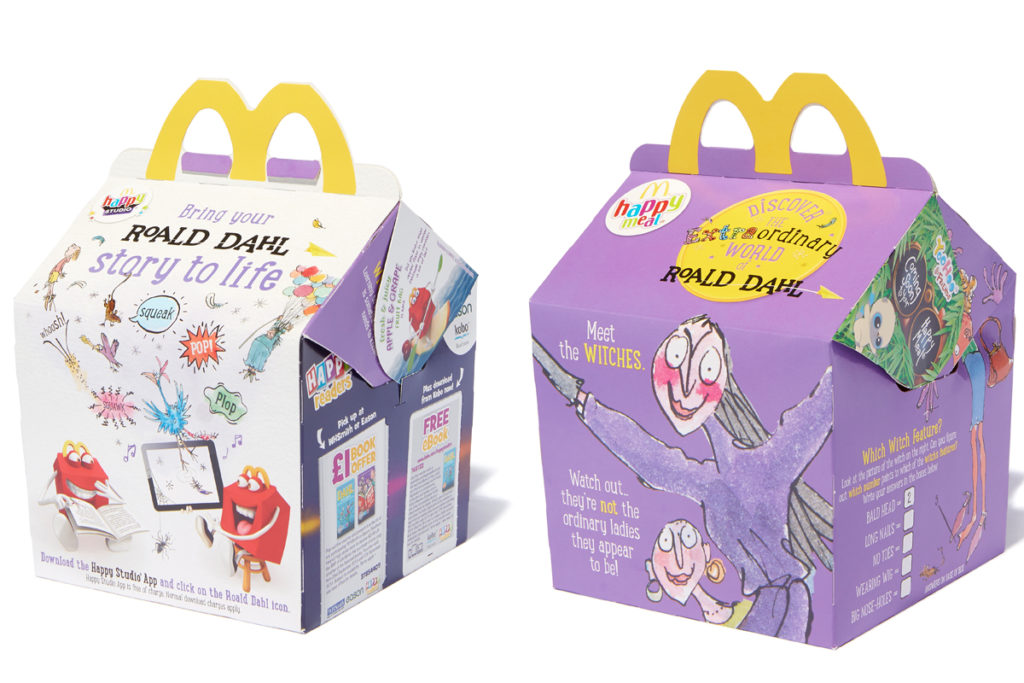
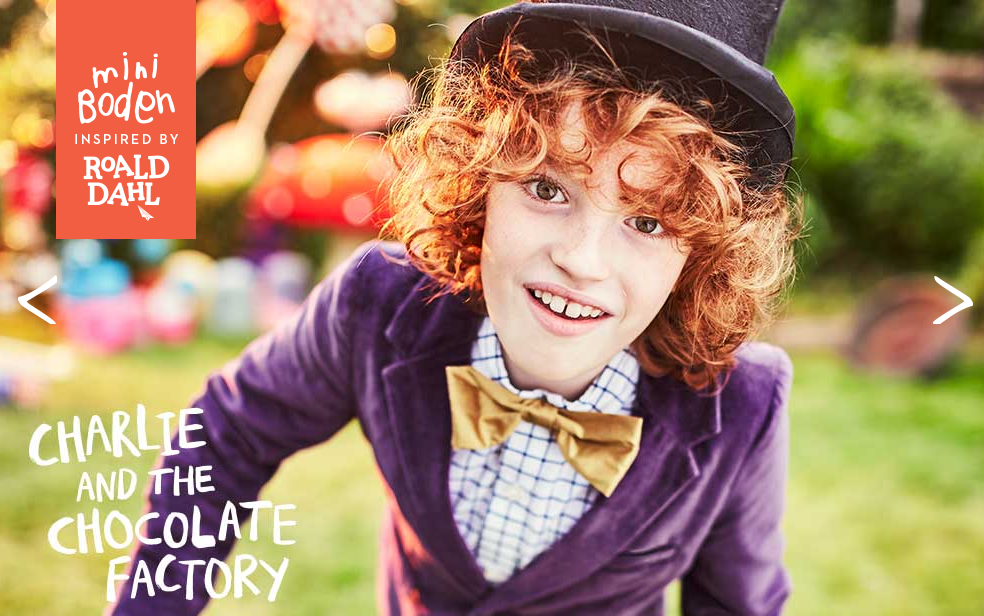
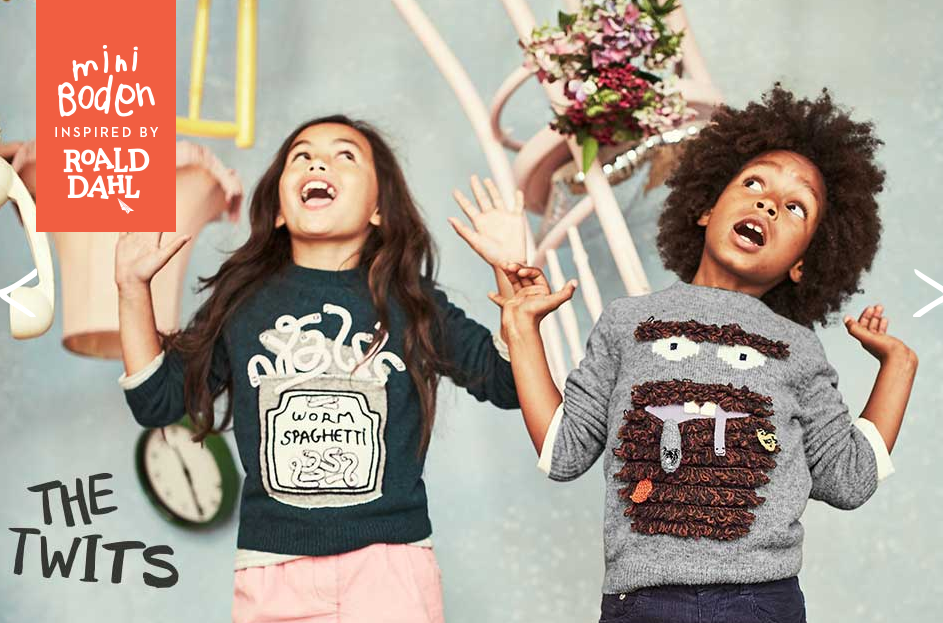 Here’s a quote from Kelly who comes off sounding almost cartoonishly money grubbing: “We are really transferring from being a literary estate to being more of a story company.” That’s the kind of thing that you tell your investors, not the press.
Here’s a quote from Kelly who comes off sounding almost cartoonishly money grubbing: “We are really transferring from being a literary estate to being more of a story company.” That’s the kind of thing that you tell your investors, not the press.
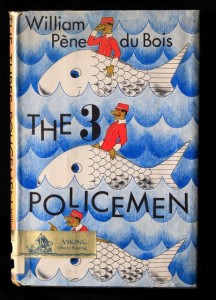 Yesterday when I was browsing at the library I came across this 1938 chapter book by William Pène du Bois. The author’s Twenty-One Balloons is
Yesterday when I was browsing at the library I came across this 1938 chapter book by William Pène du Bois. The author’s Twenty-One Balloons is 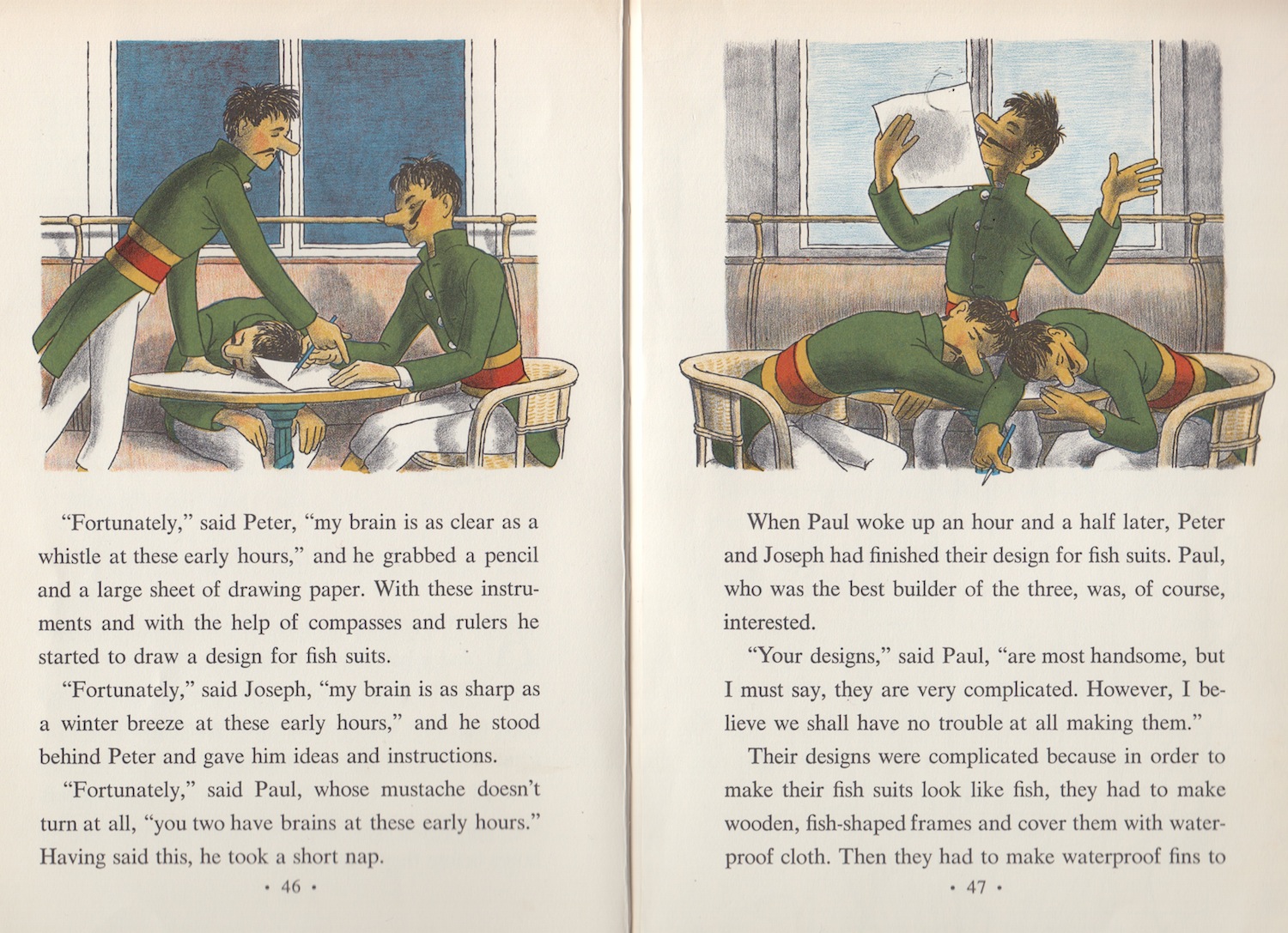
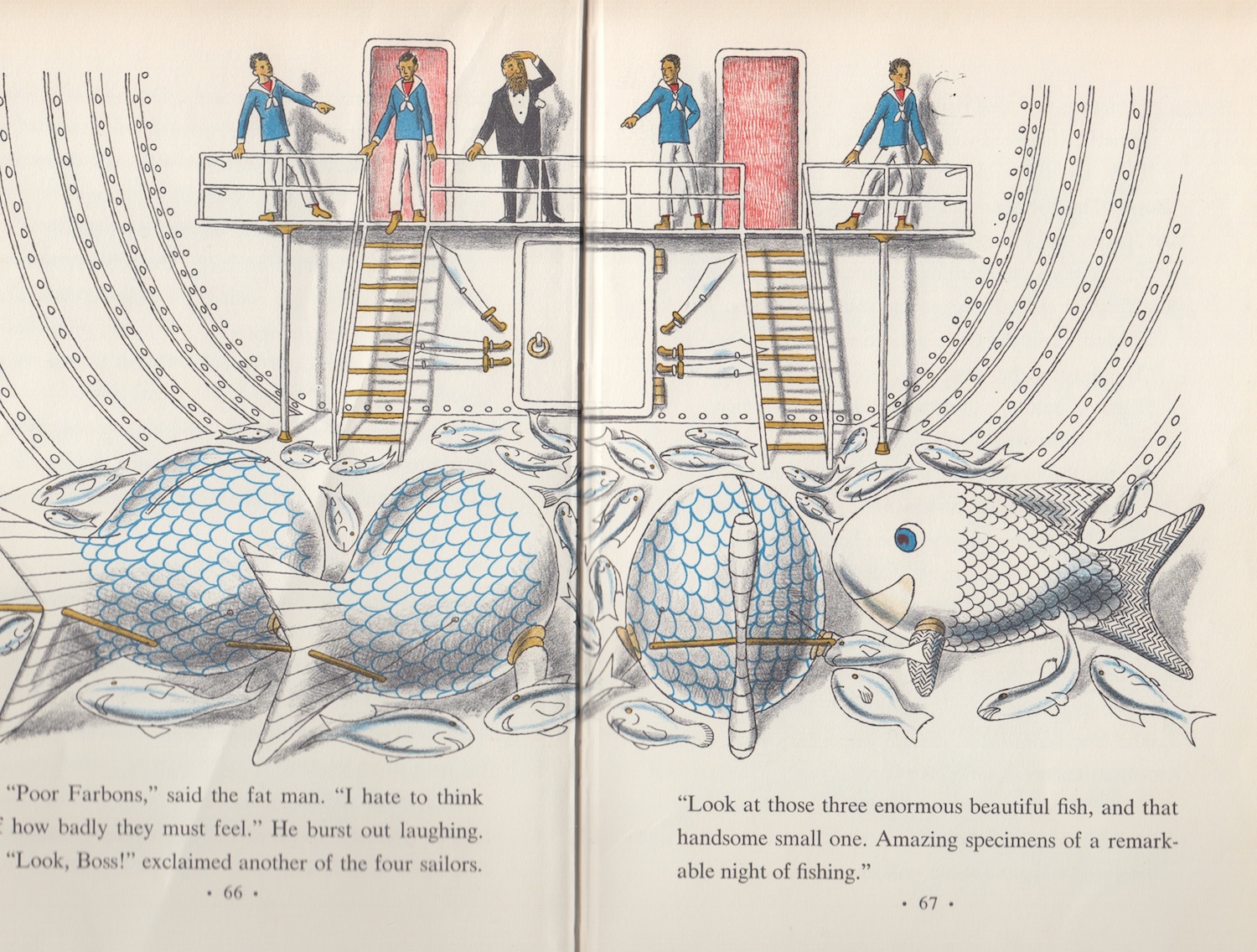
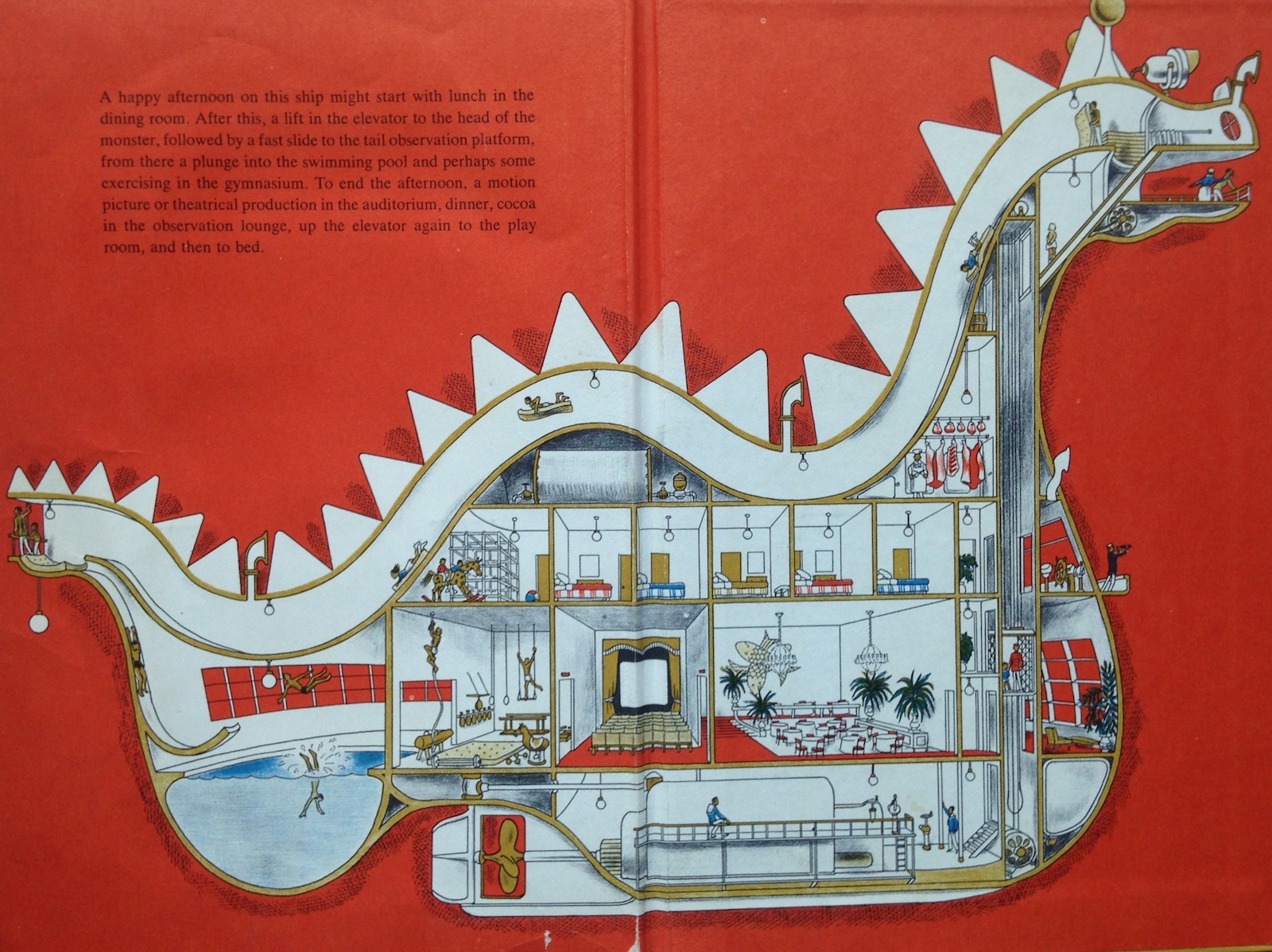
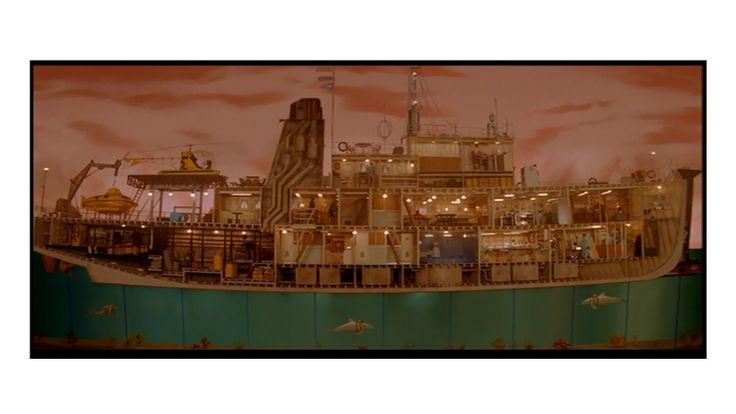
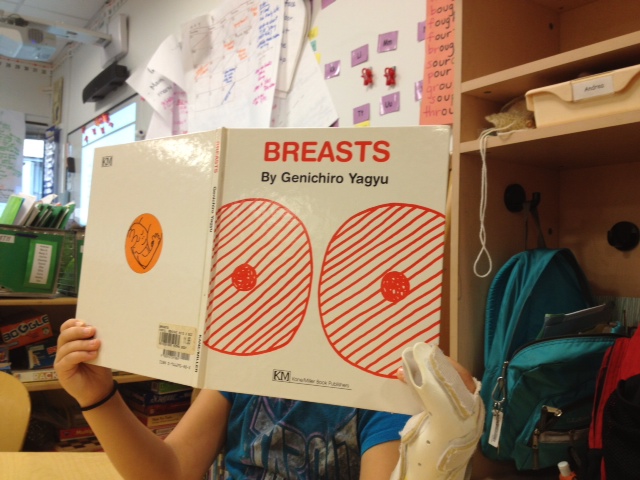 In my daughter’s third-grade class this spring, Friday mornings were devoted to the study of Human Growth and Development, a.k.a. sex ed. As a warm-up to each week’s discussion, her teachers would haul out a huge pile of books about sex and puberty — several of them with detailed anatomical drawings — and let the kids dive in during morning arrival. You have NEVER seen such focused eight and nine year olds; on these days, instead of idly chatting by their cubbies the kids would scramble into the meeting area and gather around the volumes like a pack of hungry animals. There they’d huddle in groups, goggle-eyed and totally silent save for the occasional chorus of “Gr-ooosss!” (And then we parents doing the drop-off would look at each other and mouth “Oh … my … god.”)
In my daughter’s third-grade class this spring, Friday mornings were devoted to the study of Human Growth and Development, a.k.a. sex ed. As a warm-up to each week’s discussion, her teachers would haul out a huge pile of books about sex and puberty — several of them with detailed anatomical drawings — and let the kids dive in during morning arrival. You have NEVER seen such focused eight and nine year olds; on these days, instead of idly chatting by their cubbies the kids would scramble into the meeting area and gather around the volumes like a pack of hungry animals. There they’d huddle in groups, goggle-eyed and totally silent save for the occasional chorus of “Gr-ooosss!” (And then we parents doing the drop-off would look at each other and mouth “Oh … my … god.”)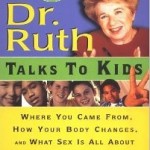 Instead of a typical textbook, the class used
Instead of a typical textbook, the class used 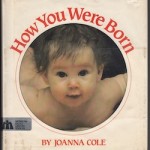
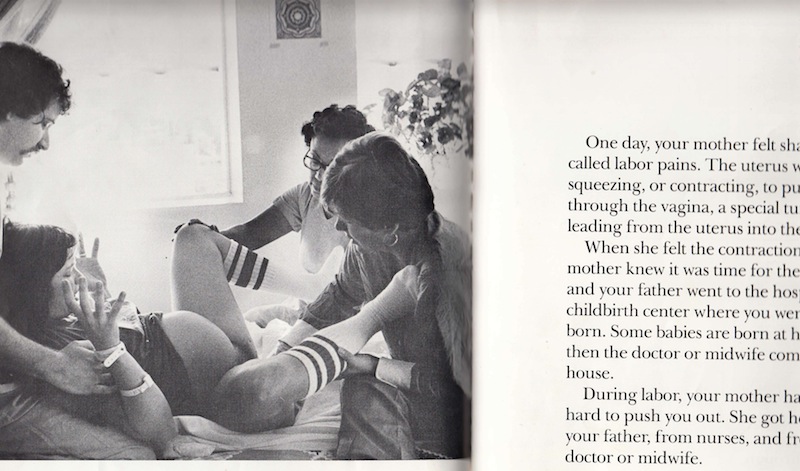
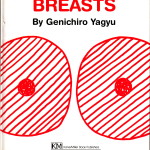 This book, translated from the Japanese, will remind you of those modern Japanese classics, Everyone Poops by Taro Gomi and The Gas We Pass by Shinta Cho (all part of the same series, My Body Science). Like those books, the illustrations here have a charming, primitive quality and the text — what little there is of it — doesn’t shy from a deadpan joke or two.
This book, translated from the Japanese, will remind you of those modern Japanese classics, Everyone Poops by Taro Gomi and The Gas We Pass by Shinta Cho (all part of the same series, My Body Science). Like those books, the illustrations here have a charming, primitive quality and the text — what little there is of it — doesn’t shy from a deadpan joke or two.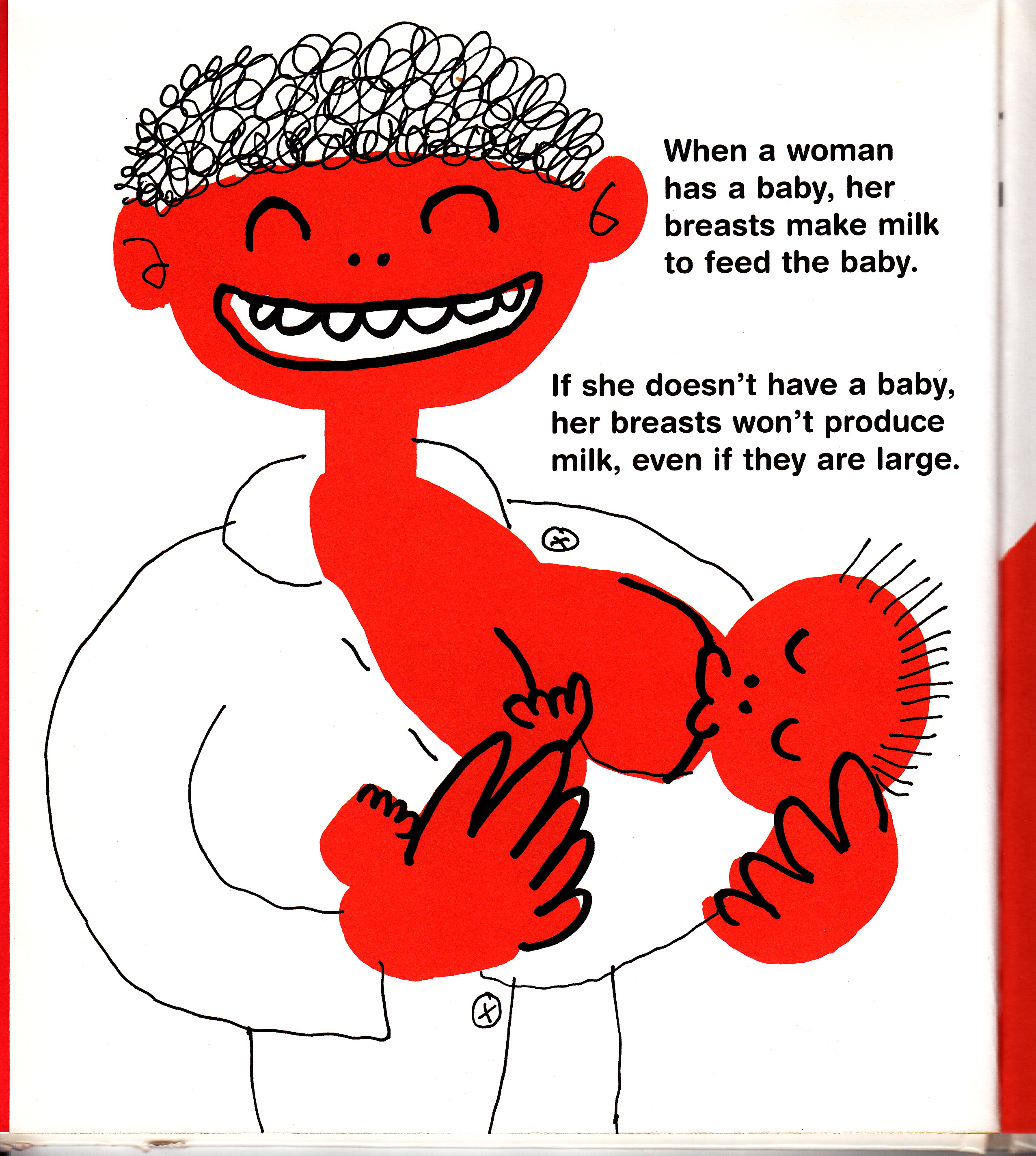
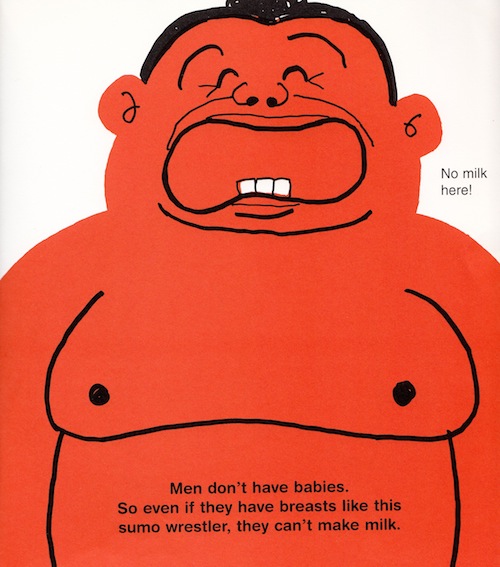
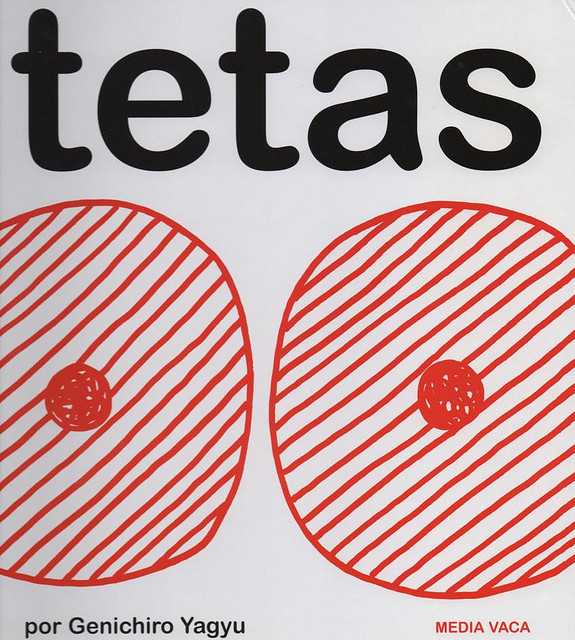
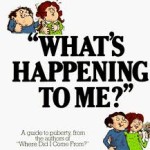 If I had grown up in a less Puritanical household, this is the book that I might have read as a kid growing up in the late 70s. It was evidently a huge hit when it came out, and it’s still in print (“over 1,000,000 copies sold!”). But I never laid eyes on it until this year, when a friend told me that he and his sister had loved it as kids. The illustrations have a very groovy Schoolhouse Rock vibe. The text is chatty and matter-of-fact (sex is compared to jumping rope; an orgasm is described as a sneeze). And I love the fact that it was written by Peter Mayle, he of the ubiquitous 90s novel, A Year in Provence.
If I had grown up in a less Puritanical household, this is the book that I might have read as a kid growing up in the late 70s. It was evidently a huge hit when it came out, and it’s still in print (“over 1,000,000 copies sold!”). But I never laid eyes on it until this year, when a friend told me that he and his sister had loved it as kids. The illustrations have a very groovy Schoolhouse Rock vibe. The text is chatty and matter-of-fact (sex is compared to jumping rope; an orgasm is described as a sneeze). And I love the fact that it was written by Peter Mayle, he of the ubiquitous 90s novel, A Year in Provence. 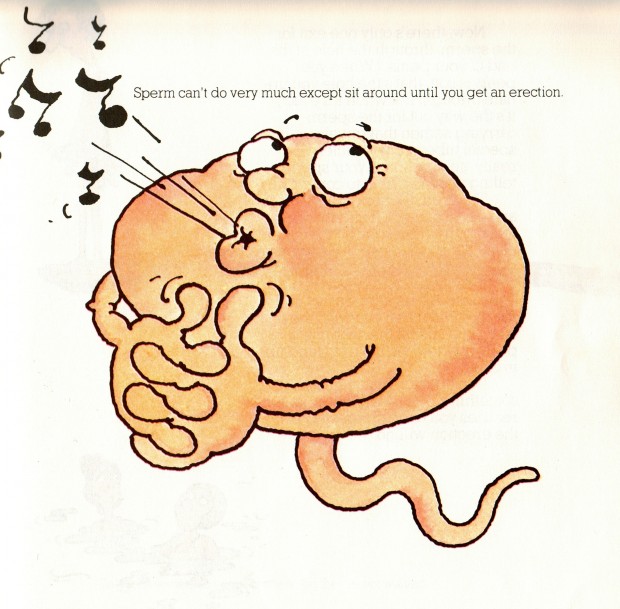
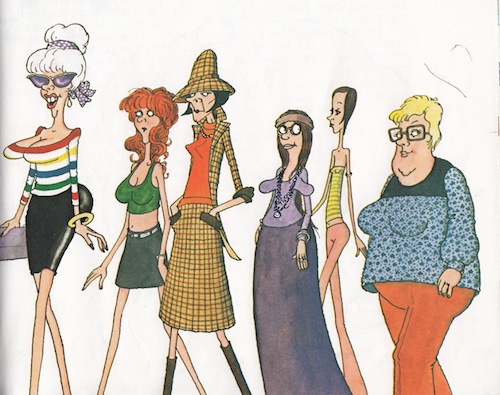 Fascinating. Boys’ wet dreams in the 70s starred the Breck shampoo girl!
Fascinating. Boys’ wet dreams in the 70s starred the Breck shampoo girl!